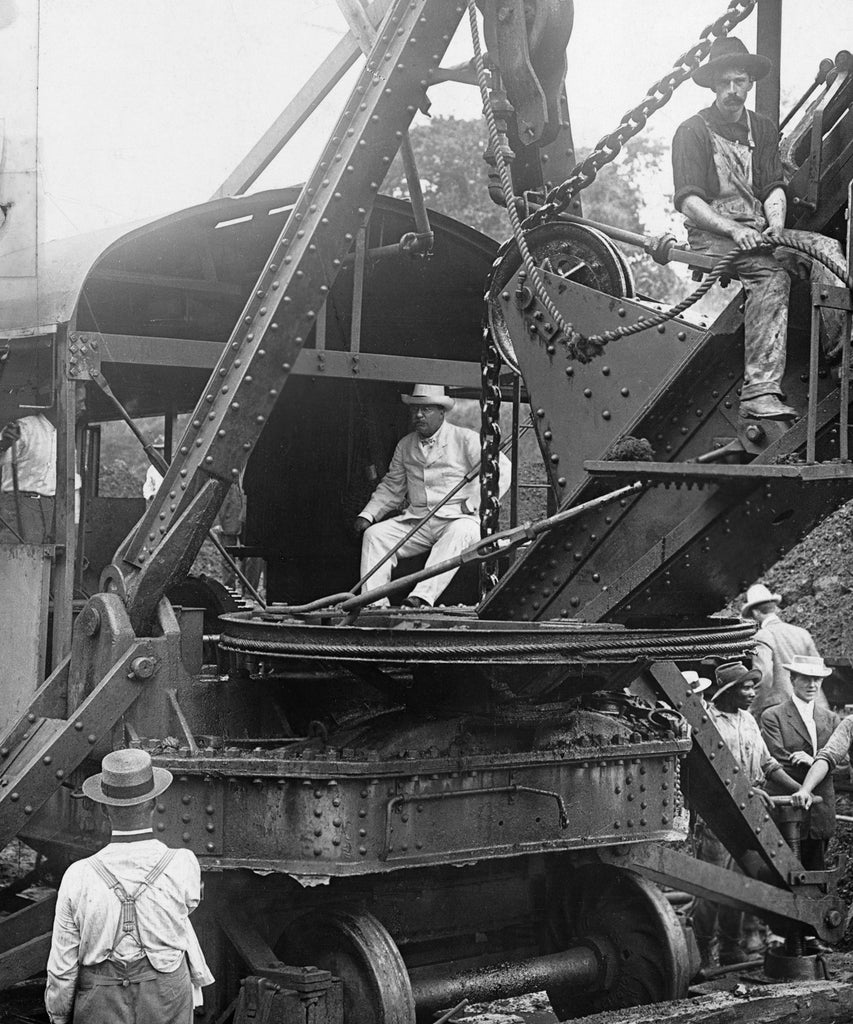The “Panama hat” — characterized by a circular shape, thick band, and straw material — has long been a summer fashion staple. But while the headgear is beloved for its functional design that protects wearers from the sun, what many of its fans don’t know is that the hat was not created in Panama. According to fashion historian Laura Beltrán, the style was actually born in the region we know today as Ecuador, as well as Colombia, where it is called a “toquilla straw hat.”
The term “Panama hat” was coined in 1906 after President Theodore Roosevelt was photographed wearing the style during his visit to the construction site of the Panama Canal. (Workers tasked with the project also wore the headwear to protect themselves from the heat and sun.) Beltrán, who is also the co-founder of Latin American fashion history platform Culturas de Moda, says “that’s where the association came from.”

The style’s roots go all the way back to pre-Hispanic times when Indigenous people in the region developed weaving techniques with toquilla straw, made from palm fronds that grow in the Andes Mountains, to make baskets, textiles, and ropes. During the colonial period in the 1600s, according to Beltrán, “the hats were introduced by European colonizers… what came after was a hybrid of the weaving techniques of pre-Hispanic cultures and the headgear worn by Europeans.”
During the 19th century, when many Latin American countries won their independence, this hat became widely worn and created in Colombia and Ecuador. “Even in paintings and maps from the era, you can see how they’d illustrate people wearing the hats and merchants selling them,” says Beltrán. By the 20th century, when Roosevelt wore it, the North American market became the largest consumer of “Panama hats” outside of Latin America. The hat was then popularized on a mass scale and became a vacation- and summer-style go-to, according to Beltrán. In 2012, UNESCO declared toquilla straw hats “Intangible Cultural Heritage of Humanity.”

Designer and Cuyana co-founder Karla Gallardo grew up in Ecuador, where the hat was a staple of everyday life. It wasn’t until she left for the United States that she learned of the misconception that the style came from Panama. “I was shocked at how a product could be sold in a way that didn’t honor its origin and its story,” says Gallardo. “There’s just a huge difference between where the product is made and where it comes from and what the customers know about it.” To correct this, earlier this year, Gallardo and her co-founder, Shilpa Shah, debuted the “This Is Not A Panama Hat” campaign highlighting the style’s origins. “We are actually moving forward with that campaign with the goal of a name change,” says Gallardo.
Beyond this campaign, Gallardo and Shah have worked closely with Indigenous artisans in Ecuador, who have fought to maintain the craftsmanship of toquilla straw hats, despite economic and social crises that have forced many to shut down their businesses. Since 2011, Gallardo has visited the town of Sisig, one of the oldest toquilla-weaving communities in the region, with whom the brand has now partnered to create its hats. “This hat’s origins are in Ecuador, and this makes Ecuadorians proud, and that needs to be preserved,” says Gallardo, noting the labor-intensive eight-hour weaving process behind the hat.


Beltrán agrees that the term “Panama hat” erases the heritage of this item, which is especially harmful at a time when globalization and fast fashion have extracted the production of these hats outside of the region. “Artisans are losing their earnings, and even the artisanal tradition of weaving is being lost,” she says. “Millions may be after this hat, but few buy it from the original artisans.”
For Gallardo, reminding customers of the true history of this hat starts with brands. “Transparency on origin and heritage is just such an important part of the shopping experience so that consumers can be more intentional in what they buy and give more value to.” As an Ecuadorian, she hopes that highlighting the history of the toquilla straw hat will ensure her country’s heritage remains intact: “There will be just much more history linked to the hat that will actually make this a bigger celebration and something to be proud of.”
Like what you see? How about some more R29 goodness, right here?

No comments:
Post a Comment